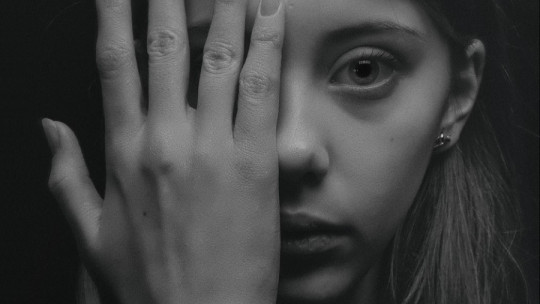
Our mood moves us. When we are sad we tend to shut down, seek to avoid action and distance ourselves from things, while when we are happy and euphoric we tend to have energy and want to act. And it also influences how we see the world and ourselves.
Although some people act very rationally and say they leave their emotions aside, they are the ones who allow us to motivate ourselves to do or not do something, to decide if we like something or not or if we tend to approach or avoid situations or stimuli. .
In short, the state of mind is something very relevant and that greatly affects our ability to adapt; that’s why, Talking about the types of mood disorders is talking about something that affects the core of our mental health And although depression is the most “famous” disorder that belongs to this category, it is far from the only form of mental alteration that we find in it.
What do we call mood disorders?
More and more we find people whose mood is not adaptive, is fixed at one extreme in a pathological way and hinders their well-being and functionality. We are talking about the different types of mood disorders, which are among the most widespread and frequent psychopathologies worldwide. Let’s see what they are and what their characteristics are.
Mood disorders are understood to be a set of psychological alterations linked to the presence of more or less persistently altered moods that generate a significant alteration in the person’s life. resulting in said extreme and pathological state of mind making it difficult for the person to adapt to their daily life.
These are disorders that cause profound suffering to the person themselves, altering aspects such as self-esteem, the way of seeing the world and events and of attributing causes and responsibilities. They affect not only the emotional sphere itself, but also cognition and even the perception of the environment. They also generate repercussions in all areas of life, varying the way of relating to the environment and with the rest of the subjects that are part of it.
We are facing the group of disorders, along with anxiety disorders, that is most prevalent worldwide, with a high percentage of the population suffering from some type of affectation of this type. It is also worth noting that the other group of disorders that we have just mentioned, anxiety disorders, are deeply linked to these It is common that they appear together or that the conditions generated by one end up causing the other.
What are the types of mood disorders?
Within mood disorders we can find some of the mental disorders with the highest incidence and prevalence worldwide.
Some of the most relevant nosological and diagnostic entities are the following, although we have to keep in mind that we can also find unspecified depressive and bipolar disorders (which do not have sufficient characteristics of the disorders we are going to talk about but are linked to ) and those induced by substances and/or medical illness.
1. Major depressive disorder
The most prevalent mood disorder of all and one of the best-known mental disorders It is characterized by the presence for at least two weeks of a sad and depressed mood for most of the day along with the loss or decrease of motivation and the ability to feel pleasure, in addition to other symptoms such as sleep, eating and concentration problems. , slowness or agitation, fatigue, hopelessness and passivity.
They also often have problems making decisions and may experience suicidal thoughts and desires.
2. Dysthymia (current persistent depressive disorder)
Similar to the previous one but generally with less intensity in the symptoms and with a much longer duration (and may become chronic), it is identified as such as that disorder characterized by the presence for at least two years during most of the day during almost every day. the days (not having periods without symptoms of more than two months in a row) of a depressed and sad mood, in addition to eating problems, sleeping problems, fatigue, low self-esteem, hopelessness and problems concentrating and making decisions.
Although at a specific moment It may seem less serious than major depression because its symptoms are less intense it must also be taken into account that the problems remain for much longer, producing wear due to accumulation that must be taken into account.
3. Bipolar disorder
Bipolar disorder is another of the main and best-known mood disorders, in which there is generally an alternation between manic episodes (in which an expansive and irritable mood, high energy level, sensations of grandiosity that can reach delirium, verbosity, accelerated thinking, distractibility, risky behavior and in some cases hallucinations at such a high level that hospitalization is sometimes required) or hypomanic (similar to the previous one but of less intensity and duration, being present for at least four days and, although observable, does not cause deterioration) and depressive episodes (equivalent in symptomatology to the symptoms described in major depression, which actually implies the existence of this type of episode).
In reality there is not one, but two basic types of bipolar disorder In bipolar disorder type 1 the subject experiences or has experienced at least one manic or mixed episode, which may or may not be preceded or followed by a depressive and hypomanic episode. To diagnose type 2, it is necessary that there be at least one depressive episode and one hypomanic episode (without there having been any manic or mixed episode).
4. Cyclothymia or cyclothymic disorder
Cyclothymia is understood as a mood disorder in which the subject presents multiple alternating hypomanic and depressive symptoms, without sufficient intensity to diagnose a depressive or bipolar episode or disorder over at least two years. Symptoms are continuous and there is usually a rapid alternation, within days.
We would be facing the equivalent of the relationship between dysthymia and depression but in the case of bipolar disorder, being milder than bipolar in symptomatology but much longer and with faster cycles.
Changes in the DSM-5
Although most professionals continue to consider them as mood disorders, the truth is that this diagnostic label has disappeared as such in the latest version of one of the main reference manuals, the DSM-5. And in this case it has been decided to stop encompassing all mood disorders in a single category and to do so in two, due to the existence of two generic types of this disorder.
In this way, today we can find that instead of mood disorders, the different psychopathologies mentioned above are included in two large categories: bipolar disorders and depressive disorders.
This decision can generate the problem of considering them very different clinical entities when they are often related, but in practice they continue to deal with the same problems that were previously known, which on a practical level has a great impact.
What is relevant is the creation of new added diagnostic labels, which, although they are no longer called that, would also be part of what is known as mood disorders.
Added disorders in the DSM-5
In addition to those previously mentioned, in the latest version of the DSM we find that some new diagnostic labels have been generated In this sense, among the new developments, two disorders previously not identified as belonging to mood disorders or included in other disorders stand out.
1. Premenstrual dysphoric disorder
Although the existence of premenstrual syndrome was previously known, being something very widespread and suffered by a large number of women, the DSM-5 has added this syndrome as a disorder.
It is considered as such the presence during the majority of menstrual cycles of affective lability (that is, rapid variations in mood), irritability, anxiety, intense tension, self-hatred or depression along with fatigue, sleep problems, appetite disturbances, pain, disinterest and concentration problems, requiring at least five of these symptoms to occur during the week before the arrival of menstruation.
2. Destructive Mood Dysregulation Disorder
This disorder is defined by the presence for at least a year and almost daily of disproportionate anger and irritability for the situation that generates them, exploding in the form of verbal or physical attacks (which can lead to aggression) with a persistently irascible mood between attacks.
These occur at least three times and can be observed per week in more than two different contexts, with the first symptoms appearing before the age of ten and not being diagnosed before the age of six or after the age of eighteen.
Depressive disorder is not the same as mood disorder
As we have seen, what characterizes the different types of mood disorders is precisely that they produce instability in the way in which the person experiences their emotions beyond the line that goes from relaxation to stress or anxiety.
That is to say, the symptoms of this type of psychopathology have more to do with the optimism/pessimism dimension than with fear/trust, in short. Now, this means that not all of these symptoms are based on sadness and hopelessness; As we have seen, although many mental disorders belonging to this category are depressive, there are also bipolar disorder and cyclothymia, in which mania and hypomania occur, which are basically the opposite of depression.
So that, Although all depressive disorders are mood disorders, the opposite is not true








